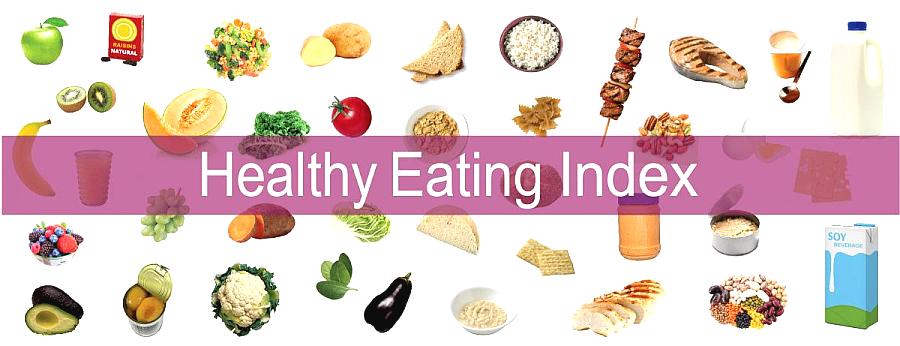

The HEI-2020 and HEI-Toddlers-2020 are the current versions of the HEI and were designed to align with the Dietary Guidelines for Americans, 2020-2025. HEI-2020 and the three previous versions, the HEI-2015, HEI-2010 and the HEI-2005, all share common key features. HHS, National Cancer Institute provides research resources and technical information on scoring the HEI. This page provides a brief overview of how the HEI-2020 and the HEI-Toddlers-2020 are scored.
HEI Components Capture the Balance Among Food Groups
The HEI-2020 and HEI-Toddlers-2020 include 13 components that reflect the key recommendations in the Dietary Guidelines for Americans, 2020-2025. There are two groupings:
- Adequacy components represent the food groups, subgroups, and dietary elements that are encouraged. For these components, higher scores reflect higher intakes, because higher intakes are desirable.
- Moderation components represent the food groups and dietary elements for which there are recommended limits to consumption. For moderation components, higher scores reflect lower intakes, because lower intakes are more desirable. The scoring standard for saturated fats in the HEI-Toddlers-2020 has unique considerations. There is no recommendation to restrict saturated fatty acids for children under 2 which is described in the section titled HEI-2020 Total and Component Scoring Standards.
Overall, a higher total HEI score, on any edition of the score, indicates a diet that aligns better with key recommendations in the Dietary Guidelines.
HEI-2020 Total and Component Scoring Standards
The HEI-2020 components can be considered as a set of scores, each of which measures compliance with a different aspect of the Dietary Guidelines. Each of the 13 components is assigned a standard for achieving a maximum score. The components are then summed to get the total HEI-2015 score: a maximum of 100 points. The HEI components are weighted equally because all aspects are considered equally important. Some areas of the diet are represented by two components and assigned a maximum of 5 points each. All other components receive a maximum of 10 points.
For example, fruit is represented by 2 components: total fruits and whole fruits. Each component can receive a maximum of 5 points with a total of 10 points for the fruit component of the diet.
Healthy dietary patterns for toddlers have unique considerations reflected in the scoring standards for added sugars and saturated fats. Toddlers have lower energy intake relative to high nutrient needs and added sugars should be avoided. Another distinctive difference is that there is no recommendation to limit saturated fats to less than 10 percent of energy intake in this age group. The scoring standard for saturated fats is not intended to imply that saturated fats or total fats should be systematically restricted in this age group, however, saturated fats cannot be unlimited without displacing the energy available to achieve other food group and subgroup goals.
The components and scoring standards are shown in the tables below titled Healthy Eating Index (HEI)-Toddlers-2020 Components and Scoring Standards and HEI-2020 Components and Scoring Standards.
Interpreting the HEI Score
The total HEI score is an indication of overall diet quality, while the component scores when examined together show a pattern of diet quality. The closer a set of foods (i.e., what you collectively eat and drink) aligns with the Dietary Guidelines, the higher the HEI score.
HEI Scores Reflect Diet Quality, Not Diet Quantity
A key feature of the HEI is that the scoring separates dietary quality from quantity using what is called a density approach. The components are generally calculated as a food group amount per 1,000 calories in the total mix of foods. The fatty acids component is an exception; it is scored as a ratio of unsaturated to saturated fatty acids.
Density scoring is important because it allows researchers to apply the HEI in a variety of research settings. How We Use the Healthy Eating Index page describes the various applications of the HEI.
Detailed information on the development of the components, scoring standards, and density approach for the HEI-2020 and HEI-Toddlers-2020, as well as the HEI-2015, HEI-2010 and HEI-2005, is described in published papers in peer-reviewed journals listed on the Healthy Eating Index resources page.

